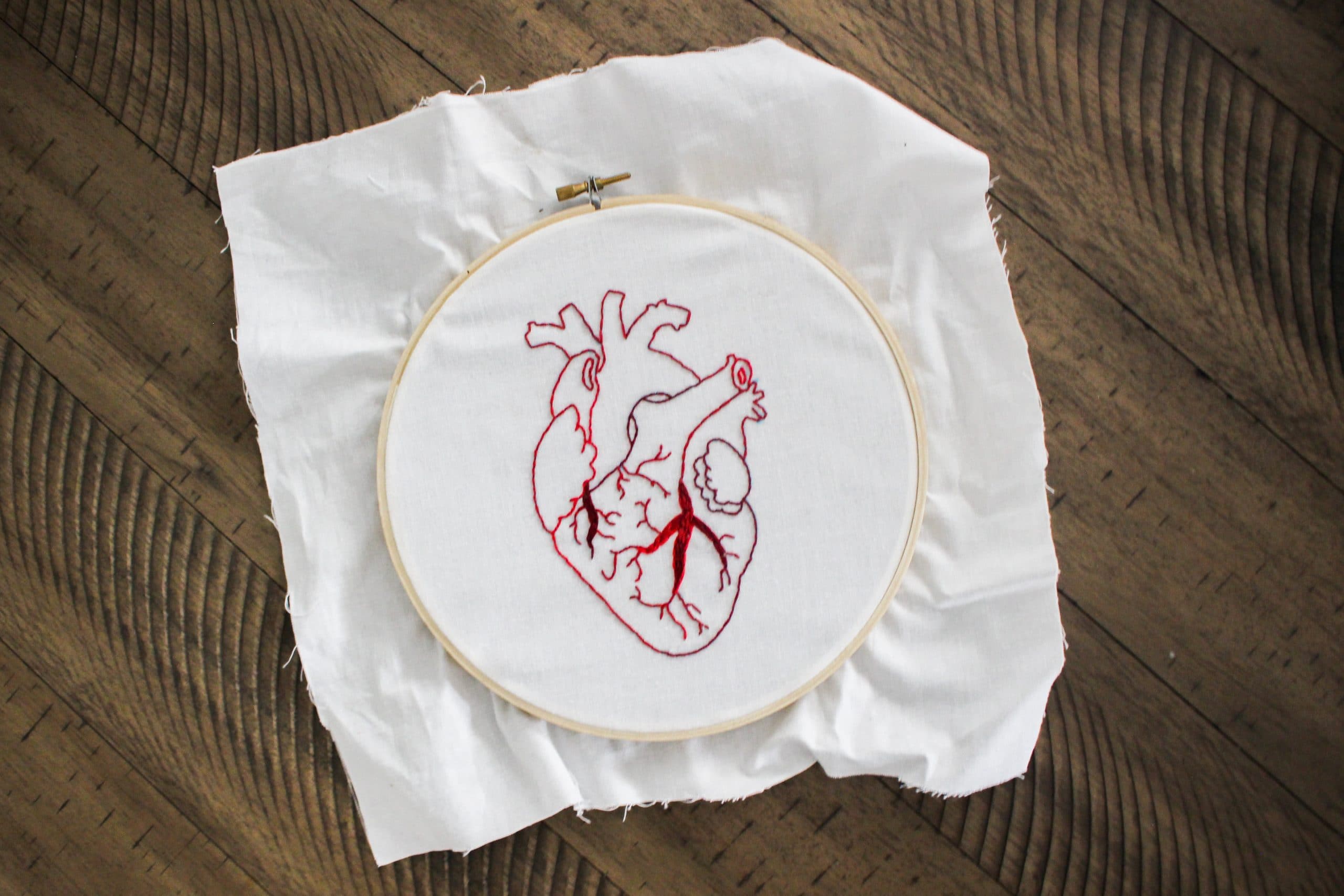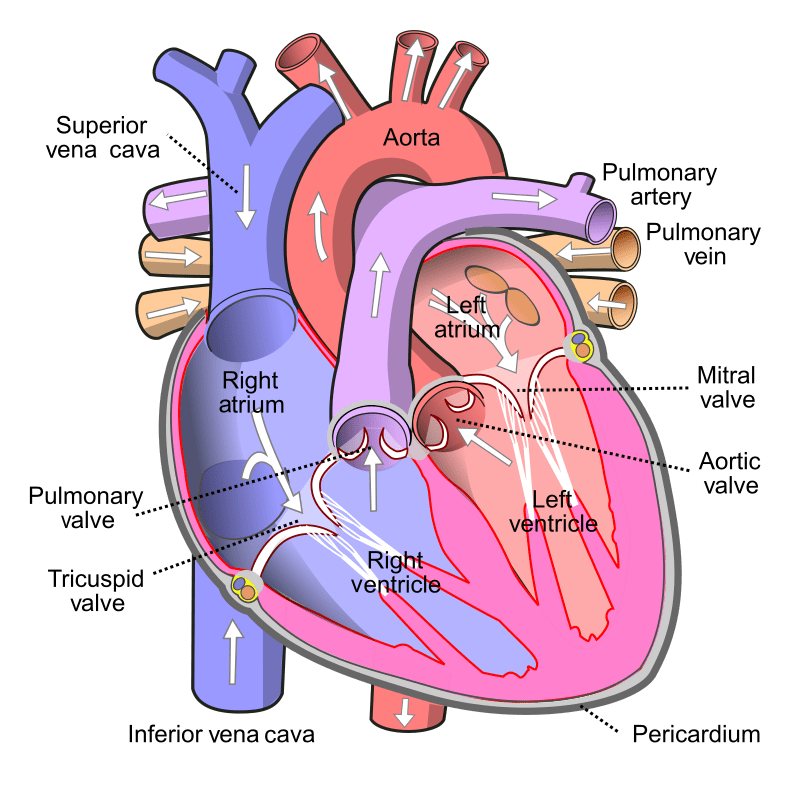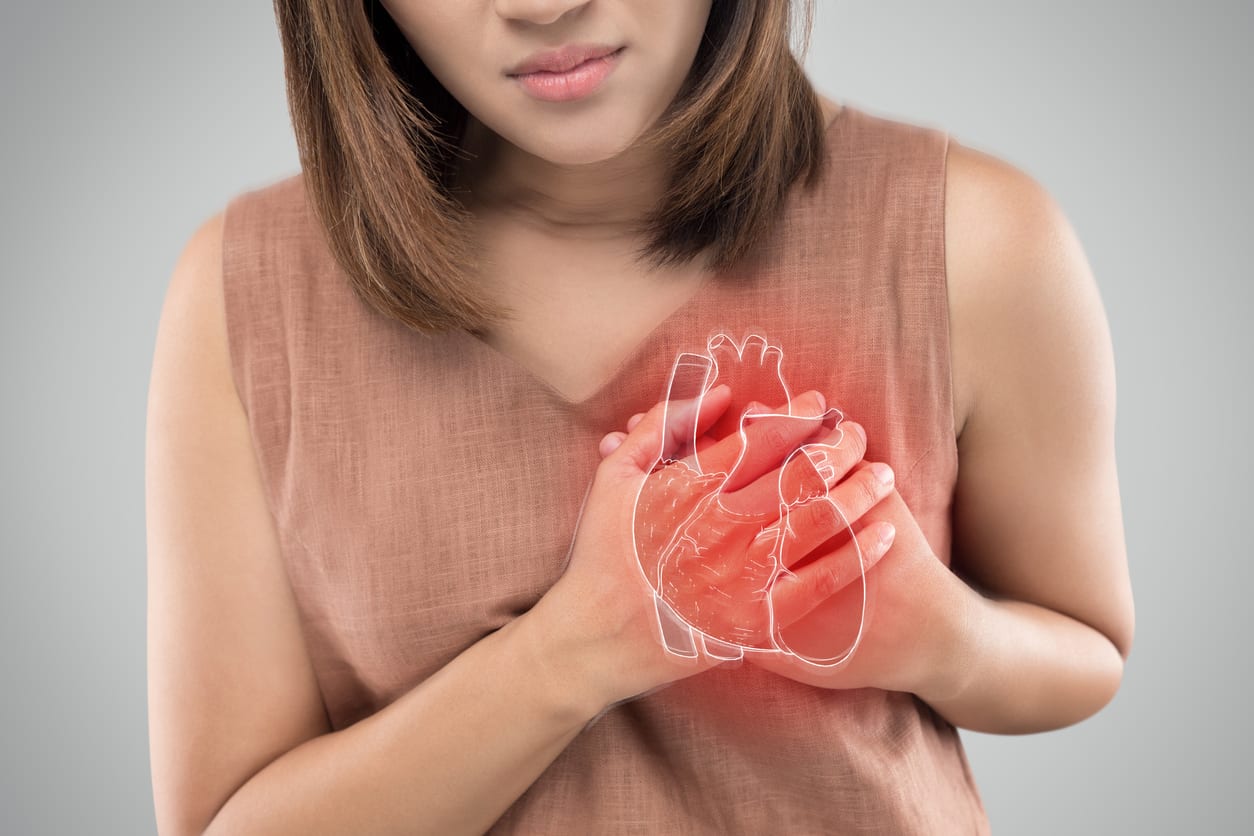 Written by Theertha, Teen Volunteer
Written by Theertha, Teen Volunteer
Halifax Public Libraries' Teen Blog is written by and for teens. Discover more posts here., opens a new window
Did you know that your heart is a lifeline to all your organs, making sure that every single one of them works properly? Probably.
But, do you know what goes on inside of your heart, and how it helps your other organs work? Maybe.
Whether you did or not, it's totally fine, because I’m going to focus on the human heart in this blog. The heart has dozens of parts to it, each with various tasks and jobs. But for now, I’m going to focus on the four chambers of the heart (the right atrium, right ventricle, left atrium and left ventricle) as well as related heart diseases.
Also, knowing the location of the heart is a good place to start. The human heart is located just behind the breastbone, and slightly to the left of it.
The four chambers of the heart
Right atrium
It is the right upper chamber of the heart that receives deoxygenated blood. This blood has already been circulated throughout the body and the right atrium pumps it into the right ventricle.
Right ventricle
The chamber within the heart that oversees the process of pumping deoxygenated blood back to the lungs. This is also where the blood receives new oxygen to be sent throughout the body.
If the right ventricle fails, the right chamber would lose its ability to pump blood. Your heart wouldn’t be able to fill up with the amount of blood that is needed to work, and so the blood would back up in the veins. If this occurs, your legs, ankles and stomach will swell. Not good.
Left atrium
This chamber is responsible for receiving oxygenated blood, or oxygen-rich blood. This blood comes from the lungs and is pumped down into the left ventricle, which delivers it to the body.
This oxygenated blood will then be sent out to all of your arteries, and once the blood is deoxygenated, the right atrium will receive it.
Left ventricle
The left ventricle pumps the oxygenated, or oxygen-rich blood, through the aortic valve and out to the rest of the body. If the left ventricle fails, there is an increase in fluid pressure. This is then sent back to the lungs causing a lot of damage to the heart's right side. When the right side of the heart loses its pumping ability, blood will back up in the veins.
For the average human being, life expectancy with left heart failure (congestive heart failure) will vary depending on the severity of the condition, genetics, age, health and more. According to the Centers for Disease Control and Prevention, opens a new window (CDC), around one-half of all people diagnosed with congestive heart failure will survive beyond five years.
Top 3 heart diseases
Cardiomyopathy
This disease of the heart muscle makes it harder for your heart to pump blood to the rest of your body. In other words, it restricts the flow of blood.
This can lead to heart failure–with the three main types being dilated, hypertrophic and restrictive cardiomyopathy. Viral infections in the heart are one of the top causes of cardiomyopathy, which include nutritional deficiencies or complex congenital heart diseases.
Rheumatic
This disease is a condition where the valves of the heart have been permanently damaged by rheumatic fever. The heart valve damage may start shortly after untreated streptococcal infection, such as strep throat or scarlet fever.
In severe cases, treatment for this heart disease may be to replace or repair a badly damaged valve. The best treatment is to prevent rheumatic fever beforehand, by taking antibiotics that can be used to treat strep infections and keep the rheumatic fever at bay.
Heart attack
The last type is a heart attack. A heart attack occurs when blood flow to a part of the heart is restricted or blocked, typically by a blood clot.
Without oxygenated blood, the heart muscle starts to die. The heart actually can repair itself after a heart attack, because the heart muscle starts to heal soon after an attack occurs. It takes around eight weeks to heal. Scar tissue may form in the damaged area(s), but it won’t pump blood throughout the body as well as a healthy heart would.
Did you know?
The heart is as big as the average fist.
"Stab the body and it heals, but injure the heart and the wound lasts a lifetime." - Mineko Iwasaki
Learn more
Looking for inspiration? Check out these websites I used to source information:
MedicineNet, opens a new window
Everyday Health, opens a new window
Johns Hopkins Medicine, opens a new window
Wikipedia - Heart, opens a new window
About the writer
Theertha Madhi is a high school student with future goals of becoming a paediatrician. She enjoys spending her time with family and friends and has been playing piano for more than 8 years.





Add a comment to: Theertha Explores the Human Heart